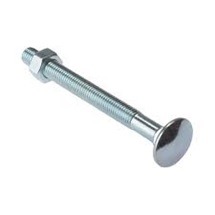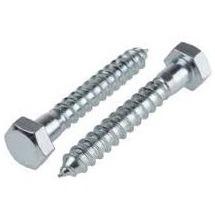Coach Bolts & Coach Screws: The Differences
One question we are often asked is what is the difference between a coach bolt and coach screw?
By comparing the images below you can see that the differences are clear – these fittings cannot be interchanged as they are used for completely different purposes.
| COACH BOLT | COACH SCREW |
 |
 |
Coach Bolt
A coach bolt has a round head with a square underneath the head and it has a thread for a hexagon nut.
Coach bolts are often used at critical points within a structure to join segments together. They are sturdy and robust and are far superior to nails and many other bolt types when used for joining timber to timber or timber to metal.
Coach bolts are available in a range of sizes. All have metric coarse threads. They are most commonly used in the construction and timber trades.
Coach Screw
A coach screw has a hexagon head and a thread for screwing directly into wood. Coach screws are essentially a heavy-duty screw for timber use.
Their primary use is generally to fasten heavy timber into position, for example when installing gates and fences.
You should always drill a pilot hole for a coach screw. The hole should be half the coach screw diameter for softwood and three quarters for hardwoods. When fixing into timber it is advisable to use a washer with the coach screw to avoid accidentally countersinking the screw head.
If you need any further clarification or information please contact us.



